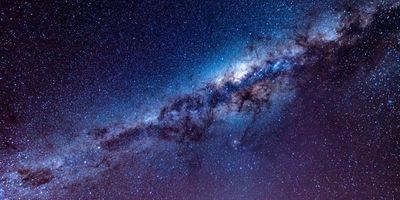Astrology has gained more visibility and credibility in recent years. No longer relegated to the late night infomercial presence of the past, astrologists are gaining fame and fortune in ways that haven't been seen in recent times.
The 12 zodiac signs that most recognize come from ancient civilizations. The first celestial coordinate system dates back to Babylonia in the first millennium B.C. Towards the end of the 5th century, Babylonian astronomers divided the ecliptic, the plane of earth's orbit around the sun, into the 12 zodiac sign system that we know today.
However, in Mesoamerica, our ancestors had a different way of doing things. You've most likely heard of the famous Mayan calendar. Unlike the zodiac system, Mayan astrology is based on yearly calculations according to their calendar. It's relatively common knowledge that these ancient civilizations were forward-thinking and incredibly advanced (don't let post-colonization tales tell you otherwise). Mayans were one of the most dominant Mesoamerican civilizations.
And so, their astrology system was just as sophisticated. It would take far more than this article to do this topic justice, so if you already know what your Mayan Sun sign is keep on reading, if not go find yours and come back, because we are now moving on to the next element of Mayan astrology: The Galactic numbers or Galactic Tones. To put it simply, your sun sign represents the personality you’re born with and your Galactic number represents the path you’re meant to take in this life.
There’s only thirteen of them; for the Mayans the number 13 is sacred (yep a complete 360 from it meaning “bad luck”), and each person is born with a number between 1 and 13. These brief summaries describe each number:
One
Or Unity, it symbolizes new beginnings. People born under these numbers tend to love starting new projects. Constantly inventing and innovating, these people tend to be founders or creators.
▲Two
Known as Duality, those born under this number possess keen intuition. They tend to draw people in easily, which makes them more prone to careers such as politics, or diplomacy.
▲Three
Known as Rhythm, the people born under this number attract many friends and admirers through the course of their lives, because of their cheerful personality. These people tend to go into the arts becoming singers, actors, etc.
▲Four
Or Measure, these people prefer stability, and to stick to a routine. They’re not fond of being the center of attention, thus preferring to work in the background instead. They tend to drift to careers such as engineering or accounting.
▲Five
Known as Center, people born under this number are curious and have a thirst for knowledge, therefore they are constantly researching and investigating. They do well in careers that allow them to express their curiosity such as Psychology.
▲Six
Also known as Balance, these people prefer to be the person in charge, as natural leaders they will thrive in any career where they get to be the decision-maker, however, these people are also heavily family-oriented.
▲Seven
Or Reflection, these people prefer their alone time over most things. But they prefer to work by themselves and do better being their own bosses. Constantly pondering the mysteries of life, these people have an ease for spirituality.
▲Eight
Known as Justice, these people genuinely like hard work. They have ease of handling money, and thus tend to attract it. These people usually end up in CEO positions or any position of authority.
▲Nine
Or Patience, people born under this sign are also born leaders, and people tend to listen to them because of their assertive nature. But their focus is on helping those around them. They tend to do well pursuing whatever they are truly passionate about.
▲Ten
Know as Manifestation, these people have the life mission of creating for others. They are pioneers, and their creations are often worthy of admiration from others. These people have no problem making their dreams a reality.
▲Eleven
Or Resolution, these people love to dream and ponder what their life can become. Because of this, they have a constant need for change and transformation, and they are successful at it. They are also better when other people are around, and therefore do better in careers where teamwork is necessary.
▲Twelve
Known as Understanding, these people are great communicators. Good at listening and understanding. Their charismatic personalities work as a magnet to attract others. They do well in careers such as writing or teaching.
▲Thirteen
Or Ascension, the thirteenth number and the most important one. People born under this number are perfectionists, they are also good at tying loose ends and making sure everything is in order. These people are said to have psychic abilities and tend to end up in careers such as metaphysics or anything that has to do with paranormal phenomena.
▲Those are the galactic numbers, but that's the tip of the iceberg for Mayan Astrology. These descriptions are a very brief glimpse into what these numbers might mean for your life. Did any of them describe you? Find out if that's your number with this Mayan Astrology calculator.
- Mesoamerica: More than the Aztec Calendar and Mayan Astrology ›
- Mayan Astrology 101 ›
- Understanding Astrology: Learn These 10 Things First ›
- You’re a Latina History Buff If You Do These 8 Things - Luz Media ›
